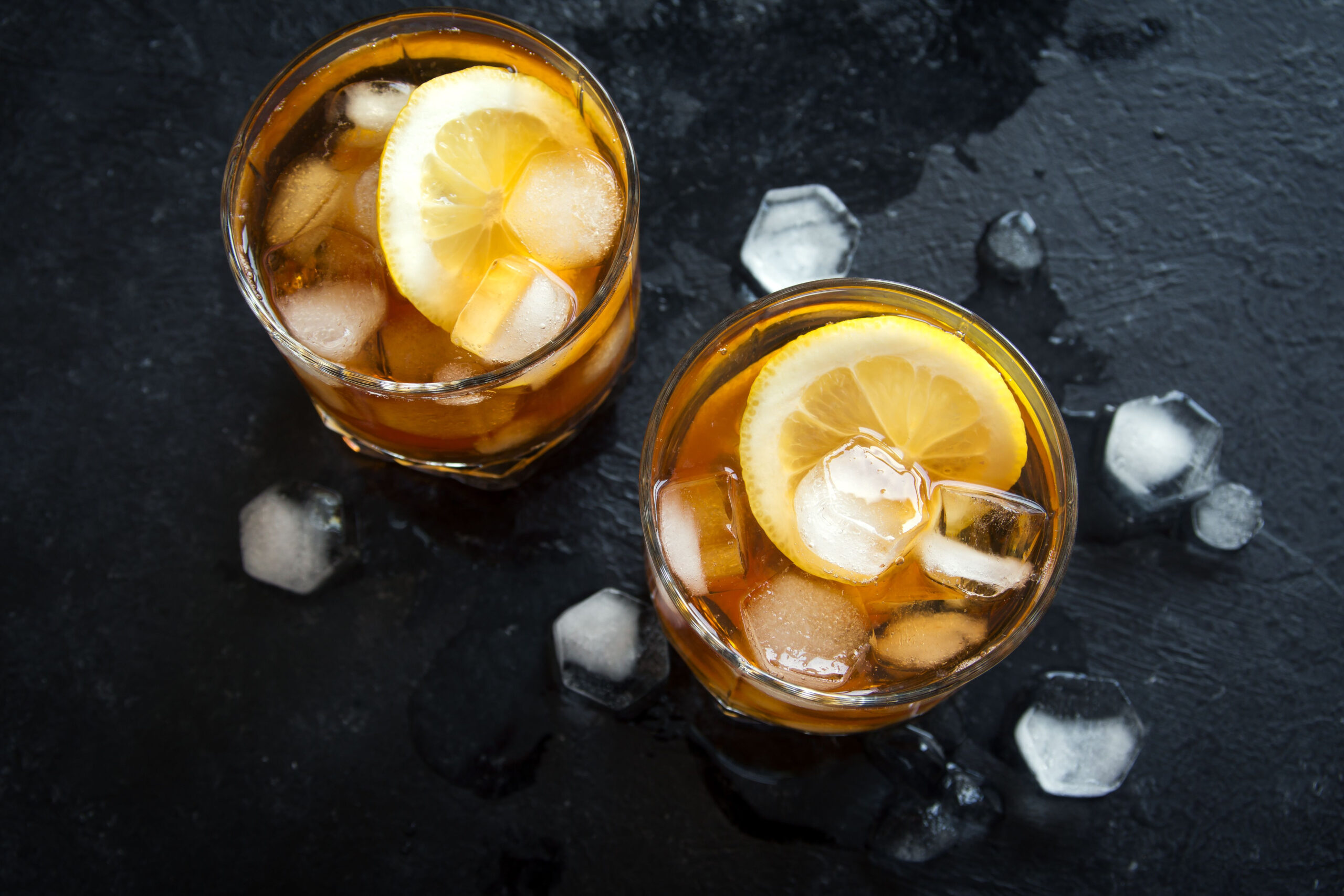
Thai Beef, Caprese Salad, Pizza Pie, and Everything Bagels: What do these foods all have in common? In this case, it’s that the four aren’t just food dishes. Rather, they are also flavors of savory alcoholic beverages inspired by a new culinary trend that’s shaking up bars and restaurants world-wide. The trend is called savory cocktails, and allows mixologists to explore the full extent of their creativity in the quest to find unexpected, food-inspired flavors to” drinkify.”
A Brief History of the Cocktail
How the culinary world came to the point of adding ghee and miso to its mixed drinks is an interesting story. If you go back to the origin of the word “cocktail,” when it first appeared in the early 19th century, it referred to a drink made up of sugar, water, bitters, and of course, liquor. By the 1870’s the concept of a sweet, fruity, alcoholic drink had become so popular that Connecticut native, Jerry Thomas, wrote “The Bartender’s Guide,” which popularized recipes for the Manhattan, Mint Julep, and Brandy Punch, but, what really helped the cocktail industry take off was the creation of better supply chains for bringing ice to warm areas. Somehow, cocktails survived the prohibition era, making a comeback during the mid-20th century, when interest in Hawaiian and Polynesian culture brought rum-based drinks to the forefront.
Bloody Mary: The Original Savory Cocktail
Although cocktails were initially devised as a sweet, refreshing alcoholic drink, savory, food-inspired cocktails have always found their way to the menu. Actually, the Prohibition era may have helped the most famous savory drink, the Bloody Mary, thrive. During the Prohibition, a popular New York bar, Harry’s New York bar, relocated to France, There, bartender Ferdinand Petiot combined an all-American product, canned tomato juice (referred to as “tomato juice cocktail” in the alcohol-free United States) with vodka brought over by Russian refugees escaping the revolution. The Bloody Mary, or as it was colloquially referred to at the time, the “Bucket of Blood,” became a popular drink, and when Prohibition ended, Petiot returned to New York, bringing the Bloody Mary with him.
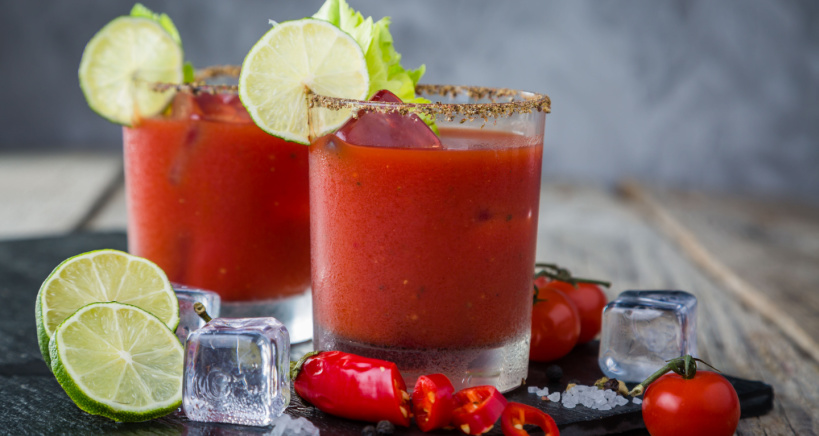
The Bloody Mary is still one of the most recognizable savory alcoholic drinks. It’s revered for its low-calorie, high nutrient benefits (since the spirit is essentially just spiked vegetable juice and has less than 100 calories in a glass). Maybe it’s the high vitamin and antioxidant content, but Bloody Marys are used as a hangover cure.
To make this refreshingly savory cocktail, start by salting the rim of your cup. You can do this by pouring salt on a plate, wetting the glass’s rim and then dipping it into the salt. Also prep the salted glass by filling it with ice cubes.
Next, take your cocktail shaker and pour in ice, tomato and vegetable juice, vodka, Worcestershire sauce, hot pepper sauce, pepper, and salt. Shake for about 20 seconds before pouring into the glass. Serve garnished with lime, olives, and celery.
Soup on the Rocks
The Bloody Mary, which appeared around 1920 wasn’t the only savory drink to become popular in the 1900s. This next savory drink genre owes its history to the post-World War II era when the country was emerging from a period of austerity and rationing. As dieting and health-food fads took off, Campbell’s canned soup tried a surprising marketing tactic — Soup on the Rocks – only 25 calories a glass.
Campbell encouraged consumers to experience their can of Beef Bouillon Soup in a glass, served “on the rocks.” Vintage ads from the 1950’s encourage customers that Soup on the Rocks is “Cool, clear, refreshing! Campbell’s Bouillon poured right out of the can into glasses filled with ice cubes. Have it often!” The “tangier” alternative was the Frisky Sour: beef bouillon, ice, and lemon juice. These recipes went “viral” and beef bouillon flew off the shelves, with many consumers spiking their “Soup on the Rocks,” with vodka and other alcoholic bases.
An interesting postscript to the short-lived soup cocktails of the 1950s, is that Campbell attempted to bring back this “classic” in 2021, adding recipes to their website for Campbell soup “brothtails,” like a daiquiri made with mushroom truffle, a pho mango bourbon sour, and a pork ramen mezcal margarita. Unfortunately, the brothtail recipes are no longer on their site.
Savory Cocktails Going Mainstream
Apart from the classic, tomatoey Bloody Mary and the strangely-flavored Campbell Soup on the Rocks, savory ingredients have made their mark on the cocktail world with olive oil added to martinis (the dirty martini), and all sorts of spicy and salty elements used to enhance the flavor profile of conventional cocktails. With mixed drinks already being spicy, sweet, and salty, some enterprising mixologists asked, why not make them umami as well?
It turns out the public really liked these umami, savory, and food-inspired drinks and 2023 has become the year of the savory cocktails, with the majority of top bars on the World’s 50 Best Bars list serving up the savory drink in one form or another.
Savory Cocktail Supplies
To create savory mixed drinks in your own home or restaurant kitchen, you will need the standard bar tools like a variety of glasses, bottle and wine openers, garnishing tools, and jiggers.
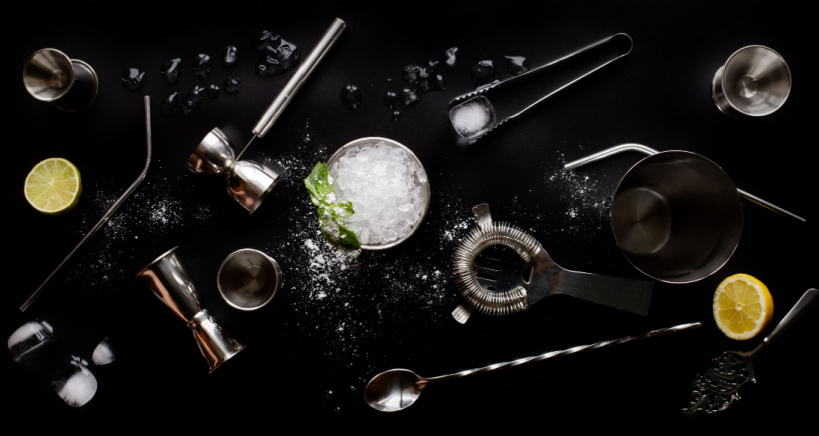
Some of these standard tools are absolutely essential when it comes to crafting savory mixed drinks. For example, savory cocktails tend to use unique herbs and seasonings that can make or break the drink. These fresh ingredients are mixed-in in one of three ways. Some are muddled into the cocktail, so make sure you have a good-quality muddler on hand. Fresh tomatoes and vegetables may be blended into the mixture, requiring a blender or a juicer and a cocktail strainer.
However, one of the more common methods that mixologists use to impart savory, non-standard flavors in perfect proportion into savory cocktails is to infuse them into the alcohol. Alcohol can be infused with a variety of flavors by locking it in an airtight container and adding the flavor in question. That way you don’t have to worry about a chunky cocktail, but still get the strong flavor you are seeking. So, if you plan to create mixed, food-inspired beverages keep some of these containers on hand.
Adding ice and properly cooling savory cocktails is key. It’s the difference between a can of Campbell soup and a “fancy” “Soup on the Rocks” beverage. Parmesan and vodka in a drink can taste umami and become a delicious comfort beverage, but if it’s served at room-temperature, it’s more likely to just taste like lukewarm cheese and vodka. To properly mix flavors and cool the drink to perfection, invest in a cocktail shaker.
Common Ingredients
Savory beverages can take on many forms and be inspired by all sorts of foods and flavors. That means there isn’t a one-size fits all list of ingredients. However, many savory drinks include the following elements, that you can stock in your kitchen:
-
- Infused alcohol: Many of the savory cocktail recipes call for infused alcohol. For example, the highly-popular salmon martini requires chefs to let smoked salmon sit in an airtight container containing gin for a week before making the drink. Infusion isn’t a quick process so make sure you know what ingredients and flavors you plan to use in advance.
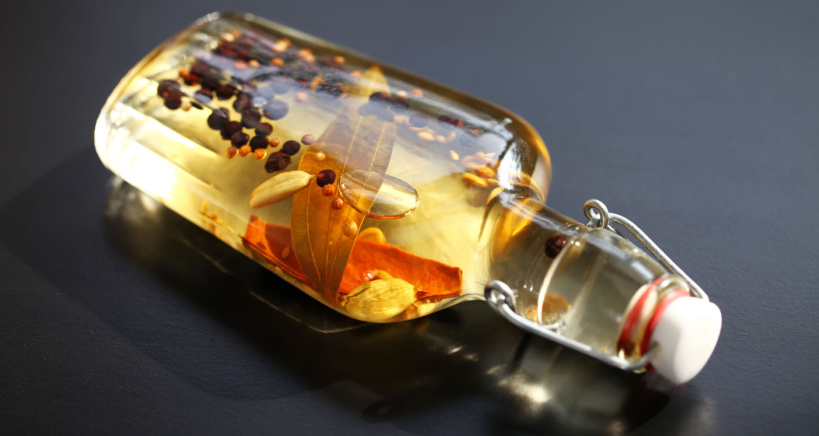
- Salt: Salt is key for a number of reasons. Firstly, it’s associated with savory and umami. Secondly, salt can keep bitterness at bay, and third of all, a small amount of salt can bring out other more hidden flavors.
- Umami: Umami is the trendy, savory flavor that everyone is talking about. Many savory cocktails bring the umami, turning comfort food into comfort beverages. Umami ingredients found in many savory cocktails include soy sauce, fish sauce, miso, MSG, and mushrooms. Or, in the case of “Soup on the Rocks,” Beef Bouillon Soup by Campbell.
- Fat: Adding fat is another method of enhancing the umami and adding volume and body to a savory cocktail. Though it may seem strange to pour oil into a mixed drink, think of the popular dirty martini, which has enjoyed more than a decade of popularity. It’s basically an ordinary martini but with artisanal olive oil added in. For the best savory benefits, mix in 20% of the alcohol’s volume with some sort of fat, like lard, oils, or even butter.
- Lemon or lime: A touch of citrus is a great way to bring out hidden flavors and just a drop or two of fresh lemon makes a major difference in flavor.
- Roasted, grilled, or cooked veggies: Whether you plan to juice or infuse, it nearly always pays to pre-cook your fresh ingredients to ensure that the flavors are as bold, caramelized, and audacious as possible.
- Parmesan cheese: When it comes to savory, cheese-inspired cocktails, parmesan cheese is a great choice for infusing or mixing into drinks. While the non-beverage, solid format of a food may call for a mozzarella or other cheese, if you try to mix those into liquids, you’ll likely end up with a half-melted or oozy mess. Parmesan is a helpful ingredient for providing the cheesy flavor without the cheesy mess.
- Shrubs: Also called drinking vinegars, these are the base for many mixed drinks. To make a shrub all you need is two ingredients – vinegar and a sweetener – although some shrubs also integrate water, fruit, or herbs for added flavor. To make a shrub, heat one part vinegar and one part sweetener over a low flame. Stir constantly until the sugar is dissolved. At that point you can add one part fruit, and any herbs or spices you want and let them simmer. Strain and store for a few days before using it as a cocktail ingredient. You can also cold-process your shrubs. This is done by infusing the vinegar, sweetener, and other ingredients in an airtight jar for a week, after which it is strained and ready for use.
Just these few ingredients offer endless flavor possibilities. You can use any type of vinegar, including strongly-flavored ones like apple-cider vinegar or balsamic, and creative sweeteners like honey or agave. You can also add all sorts of fruits (except for acidic ones, since the vinegar already has a strongly acidic flavor), and you can also add exotic waters including coconut water, and many others.
- Exotic flavors: This is a golden opportunity to combine two trends, savory cocktails and global flavors. Popular bars have been producing savory cocktails with flavors from around the world from tacos to gazpacho to Indian Mooli to the Kimchini (a Kimchi-infused martini) and even Za’atar cocktails. If you are looking for inspiration as to what flavor to choose for your cocktail recipe, consider taking a look at different flavors from around the globe to get some ideas, and then pick your favorites.
Chicken Soup Martini
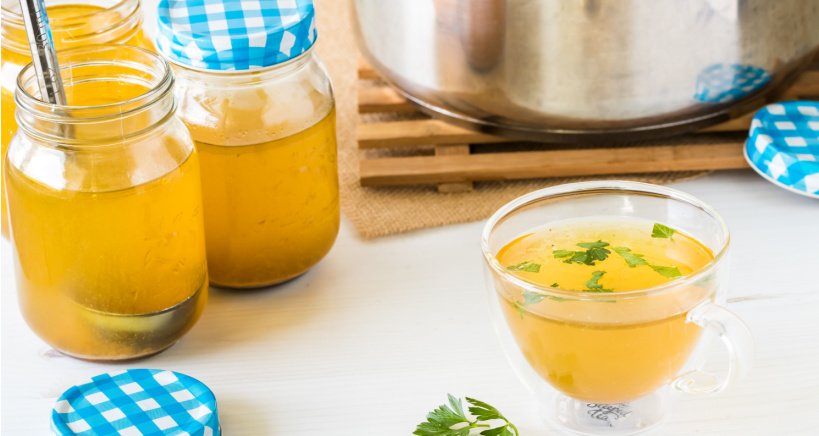
Savory cocktails are popular for many age demographics. TikTok, a platform that caters to young people, has hundreds of thousands of views under the savory cocktail tag, including this recipe for a chicken soup martini from the account VeryGoodDrinks.
For this recipe you will need:
Ingredients:
- Onions
- Celery
- Carrots
- Olive oil
- Gin
- Chicken bouillon
- MSG
- Salt
- Manzanilla sherry
- Ice
Steps:
The chicken soup martini basically utilizes two liquid elements to create the umami, chicken soup flavor. The first is an alcoholic infusion, and the second is a broth-like brine.
To make the infusion:
-
- Cut up and lightly saute onions, celery, and carrots in olive oil.
- Pour the sauteed vegetables into an airtight container and add gin.
- Let the gin sit for two or three days before straining it.
To make the brothy brine:
-
- Mix chicken bouillon in water.
- Add MSG and salt to taste.
To make the chicken soup martini cocktail:
-
- In a shaker filled with ice, add two ounces of the infused gin, a quarter ounce of the brine, and a half ounce of Manzanilla sherry. Shake to combine.
- Mix in a few drops of salt and stir with a bar spoon.
- Serve with a little bit of olive oil mixed in and garnished with a carrot.
- Cheers!